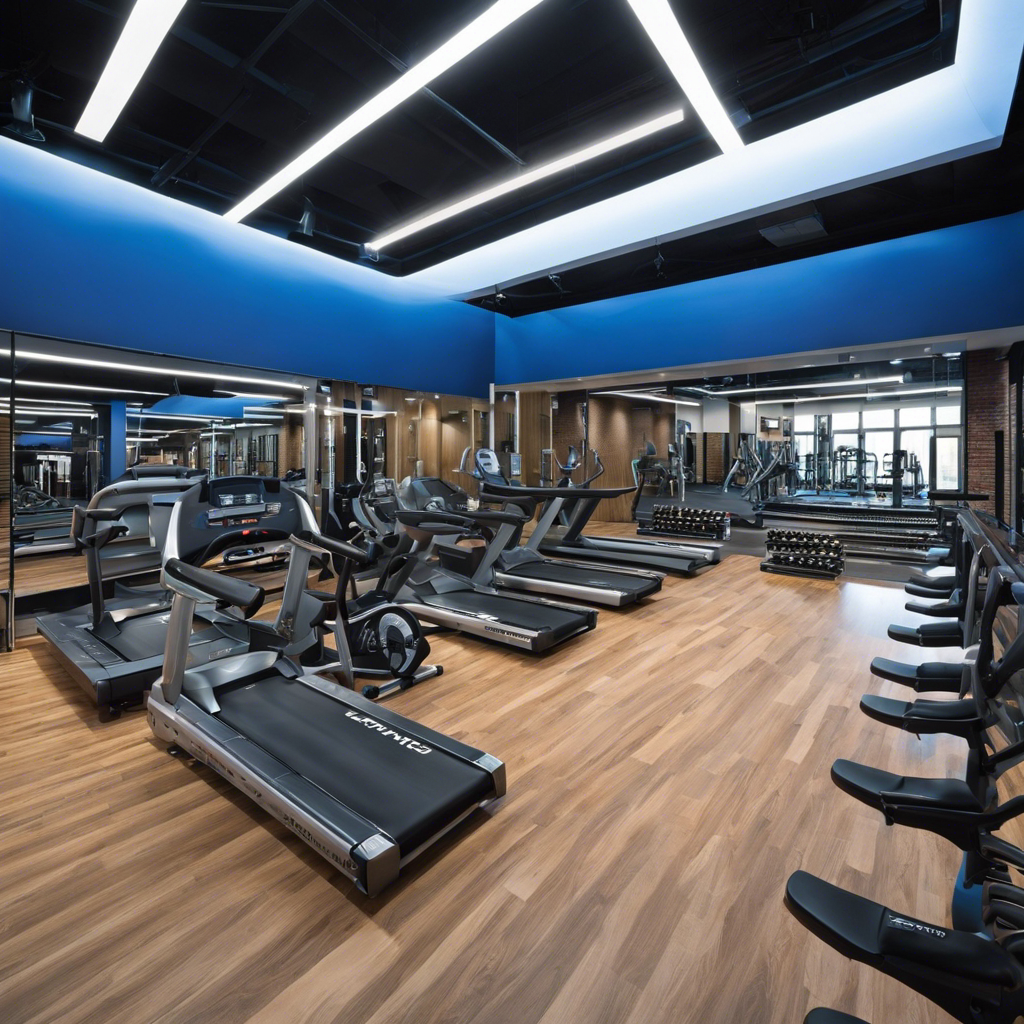Are you tired of high energy bills and inconsistent temperatures in your fitness center? Wondering how you can improve the efficiency of your HVAC system without breaking the bank?
Look no further, because in this discussion, we will explore some practical tips and strategies to help you optimize your HVAC system and create a more comfortable environment for your members.
From proper system sizing to implementing smart thermostat controls, we will cover it all.
So, if you’re ready to take your fitness center to the next level, keep reading to discover the secrets to enhancing HVAC efficiency in Tulsa’s fitness centers.
Key Takeaways
- Proper HVAC system sizing is crucial for maximizing energy efficiency and ensuring optimal performance in fitness centers.
- Regular maintenance of the HVAC system, including filter replacement and ductwork inspection, is essential for optimal performance and energy efficiency.
- Upgrading to energy-efficient HVAC equipment, such as variable speed motors and smart thermostats, improves performance and reduces energy consumption.
- Optimizing airflow and ventilation through regular cleaning of vents and ducts, as well as the use of air purifiers and ventilation systems, ensures good air quality and temperature control.
Proper HVAC System Sizing
Proper HVAC system sizing is crucial for maximizing energy efficiency and ensuring optimal performance in fitness centers in Tulsa. When it comes to HVAC system installation, selecting the right size is essential to meet the specific needs of the facility.
An undersized system will struggle to maintain the desired temperature and humidity levels, resulting in discomfort for the occupants. On the other hand, an oversized system will cycle on and off frequently, leading to inefficient energy consumption and increased wear and tear on the equipment.
To determine the appropriate size, factors such as the size of the space, occupancy levels, and heat-generating equipment must be taken into account. Consulting with an experienced HVAC professional is highly recommended to ensure accurate system sizing and optimal energy efficiency in fitness centers.
Regular HVAC Maintenance
To ensure optimal performance and energy efficiency in fitness centers, regular maintenance of the HVAC system is essential. One crucial aspect of maintenance is HVAC filter replacement. Filters play a vital role in trapping dust, allergens, and other particles, preventing them from circulating in the air. Over time, filters can become clogged, reducing airflow and hindering the system’s efficiency. Regularly replacing filters ensures proper air quality and helps the HVAC system work at its best.
Another important maintenance task is ductwork inspection. Ducts can develop leaks or become blocked, leading to inefficient airflow and energy wastage. Regular inspections help identify and address these issues promptly, improving HVAC efficiency and reducing energy consumption.
Upgrading to Energy-Efficient Equipment
Consider upgrading your fitness center’s HVAC equipment to energy-efficient models for improved performance and reduced energy consumption.
Upgrading to energy-efficient equipment is one of the most effective energy saving strategies for fitness centers. Energy-efficient HVAC systems are designed to operate more efficiently, resulting in lower energy costs and reduced environmental impact.
These systems utilize advanced technologies such as variable speed motors, smart thermostats, and improved insulation, which significantly improve equipment performance. Variable speed motors adjust the speed of the system’s components based on the demand, ensuring that energy isn’t wasted.
Smart thermostats allow for precise temperature control, optimizing comfort while minimizing energy usage. Improved insulation helps to prevent air leakage, ensuring that the conditioned air stays inside the building.
Optimizing Airflow and Ventilation
Upgrading to energy-efficient HVAC equipment is just the first step in improving your fitness center’s efficiency; now, let’s focus on optimizing airflow and ventilation.
Proper airflow and ventilation play a crucial role in maintaining good air quality and temperature control within your facility. To optimize airflow, ensure that vents and ducts are clean and free from any obstructions. Regular maintenance and cleaning of filters and coils are essential to prevent dust and debris buildup that can hinder airflow.
Additionally, consider the use of air purifiers and ventilation systems to remove pollutants and ensure good air quality. Proper ventilation can also help with temperature control by ensuring a consistent distribution of cooled or heated air throughout your fitness center.
Implementing Smart Thermostat Controls
Implementing smart thermostat controls can greatly enhance the energy efficiency and temperature control in your fitness center.
Smart thermostats use advanced technology to optimize HVAC operations, resulting in significant energy savings. These thermostats can automatically adjust temperature settings based on occupancy and time of day, ensuring optimal comfort while minimizing energy consumption.
With remote monitoring capabilities, you can access and control the thermostat settings from anywhere, allowing you to make adjustments even when you aren’t on-site. This feature is particularly beneficial for fitness centers that have fluctuating occupancy levels throughout the day.
Frequently Asked Questions
What Are the Most Common Signs That Indicate the HVAC System in a Fitness Center May Be Improperly Sized?
If your fitness center’s HVAC system is improperly sized, you may notice signs such as inadequate cooling or heating, frequent breakdowns, and high energy bills. These indicate a need for proper HVAC system sizing to improve efficiency.
Are There Any Specific Areas of an HVAC System That Require More Regular Maintenance in Fitness Centers Compared to Other Types of Buildings?
In fitness centers, regular maintenance of the HVAC system is crucial for optimal performance. Pay special attention to air filters, coils, and ventilation systems to ensure proper air quality and prevent issues.
How Long Does It Typically Take for the Energy-Efficient Upgrades to an HVAC System in a Fitness Center to Pay for Themselves Through Energy Savings?
Typically, it takes a certain amount of time for energy-efficient upgrades to an HVAC system in a fitness center to pay for themselves through energy savings.
Are There Any Specific Considerations or Challenges to Keep in Mind When Optimizing Airflow and Ventilation in a Fitness Center Compared to Other Types of Buildings?
When optimizing airflow and ventilation in a fitness center, there are specific challenges and considerations to keep in mind. These include managing high humidity levels, balancing temperature zones, and ensuring proper air filtration for a clean and comfortable environment.
Can Implementing Smart Thermostat Controls for HVAC Systems in Fitness Centers Help to Improve Energy Efficiency Even Further, and if So, How?
Implementing smart thermostat controls in fitness centers can greatly improve energy efficiency by optimizing HVAC systems based on occupancy and usage patterns. This leads to energy savings potential and a more comfortable environment for patrons.


